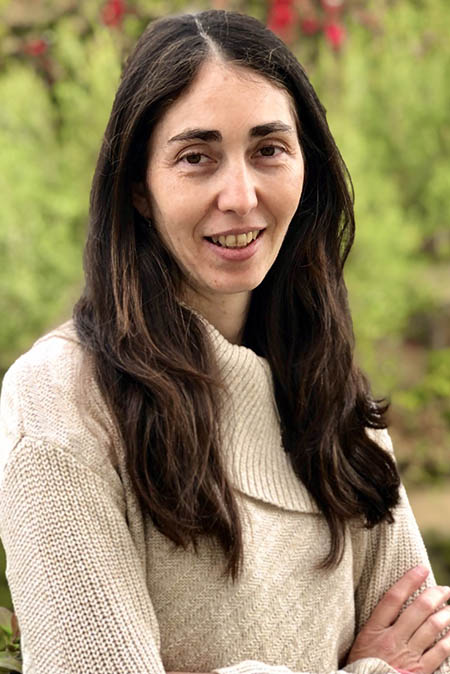Therapy Sneaks into Hard Layer of Pancreatic Cancer Tumor and Destroys it From Within
In animal models, tumor-penetrating therapy allows chemotherapy drugs to be delivered deeper inside tumor tissue, increasing effectiveness
Published Date
By:
- Michelle Brubaker
Share This:
Article Content
Every 12 minutes, someone in the United States dies of pancreatic cancer, which is often diagnosed late, spreads rapidly and has a five-year survival rate at approximately 10 percent. Treatment may involve radiation, surgery and chemotherapy, though often the cancer becomes resistant to drugs.
Researchers at University of California San Diego School of Medicine and Moores Cancer Center, in collaboration with Sanford-Burnham-Prebys Medical Discovery Institute and Columbia University, demonstrated that a new tumor-penetrating therapy, tested in animal models, may enhance the effects of chemotherapy, reduce metastasis and increase survival.
The study, published online March 9, 2021 in Nature Communications, showed how a tumor-targeting peptide, called iRGD, can sneak inside the armor that the tumor built to protect itself and use the fibrous tissue as a highway to reach deeper inside, destroying the tumor from within.
The pancreas is a large gland located behind the stomach. It makes enzymes that aid digestion and hormones that regulate blood-sugar levels. Pancreatic ductal adenocarcinoma (PDAC) is a subtype of pancreatic cancer that is highly drug-resistant due, in part, by the hard shell-like outer layer surrounding the tumor.

Tatiana Hurtado de Mendoza, PhD, is the first author of the study and assistant project scientist at UC San Diego and Moores Cancer Center.
“This type of tumor is made up of a dense fibrous tissue that acts as a barrier to drugs trying to get through. Many drugs can reach the vessels of the tumor, but they are not able to get deep into the tissue, making treatment less effective, and that is one reason why this type of cancer is so challenging to treat,” said Tatiana Hurtado de Mendoza, PhD, first author of the study and assistant project scientist at UC San Diego School of Medicine and Moores Cancer Center.
“Our study found that the tumor-penetrating peptide iRGD is able to use this fibrous network to deliver chemotherapy drugs deep into the tumor and be more effective.”
The research team examined the microenvironment of PDAC tumors in a mouse model. They found that after targeting the tumor blood vessels, iRGD binds to high levels of β5 integrin, a protein produced by cells known as carcinoma-associated fibroblasts (CAFs) that produce much of the tumor’s protective fibrous cover.
“We were able to closely replicate human disease in our mouse model and found that when iRGD was injected with chemotherapy in mice with high levels of β5 integrin, there was a significant increase in survival and a reduction in the cancer spreading to other organs in the body compared to chemotherapy alone. This could be a powerful treatment strategy to target aggressive pancreatic cancer,” said Andrew Lowy, MD, co-corresponding author of the study, professor of surgery at UC San Diego School of Medicine and chief of the Division of Surgical Oncology at Moores Cancer Center at UC San Diego Health.

Andrew Lowy, MD, is the co-corresponding author of the study, professor of surgery at UC San Diego School of Medicine and chief of the Division of Surgical Oncology at Moores Cancer Center at UC San Diego Health.
“What is also exciting about this finding is the iRGD therapy did not produce any additional side effects. This is critically important when considering treatments for patients.”
The researchers said next steps include a national human clinical trial. They estimate the trial could begin in one year.
“The knowledge gained from our study has the potential to be directly applied to patient care. We also believe that the levels of β5 integrin within a pancreatic cancer could tell us which patients would benefit the most from iRGD-combination therapy,” said Lowy.
Co-authors include: Gary Braun, Venkata Kotamraju, Sanford-Burnham-Prebys Medical Discovery Institute; Evangeline Mose and Randall French, UC San Diego Health; Gregory Botta, Sanford-Burnham-Prebys Medical Discovery Institute, UC San Diego Health, Scripps Research Translational Institute; Kodai Suzuki and Norio Miyamura, Columbia University Vagelos College of Physicians and Surgeons ; Tambet Teesalu, Sanford-Burnham-Prebys Medical Discovery Institute, University of California Santa Barbara, and University of Tartu; Erkki Ruoslahti, Sanford-Burnham-Prebys Medical Discovery Institute and University of California Santat Barbara; and Kazuki Sugahara, Sanford-Burnham-Prebys Medical Discovery Institute and Columbia University Vagelos College of Physicians and Surgeons.
Funding for this research came, in part, from National Institutes of Health (R01CA167174, R01CA155620, R01CA152327 and CA121949 T32 Fellowship), the Alexandrina M. McAfee Trust Foundation, the Career Development Award from American Association of Cancer Research/Pancreatic Cancer Action Network, the European Regional Development Fund (Project No. 2014- 2020.4.01.15-0012), European Research Council from European Regional Development Fund (GLIOGUIDE), Estonian Research Council (PRG230 and EAG79), and the Research for a Cure of Pancreatic Cancer Fund (KL2TR001112-02).
Share This:
You May Also Like
Stay in the Know
Keep up with all the latest from UC San Diego. Subscribe to the newsletter today.



